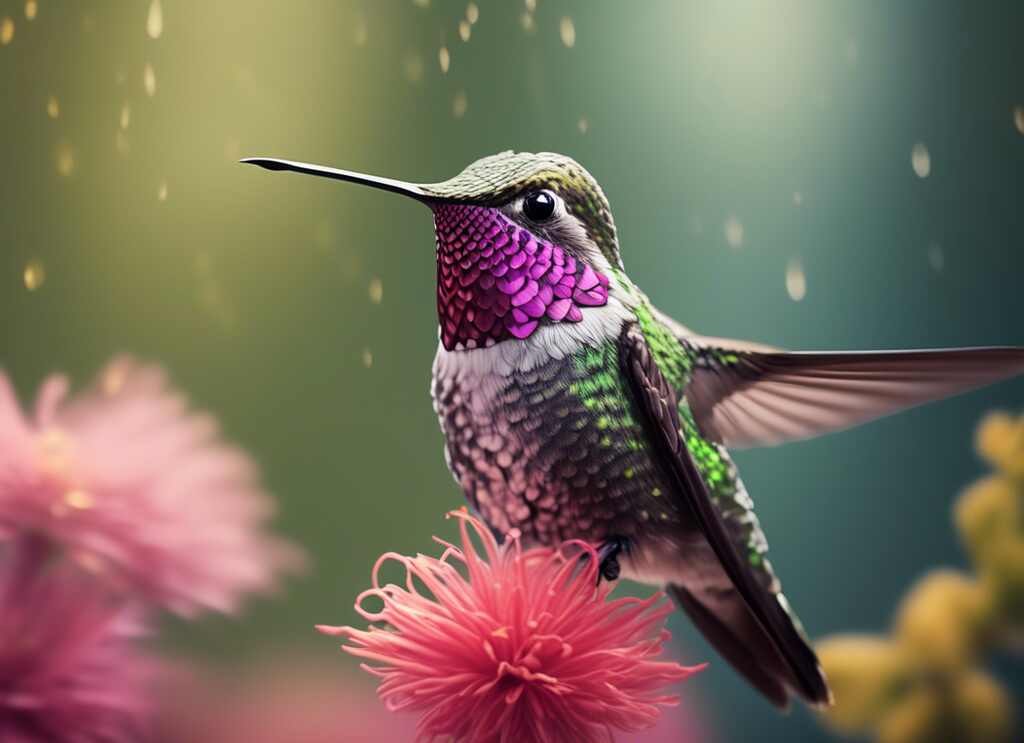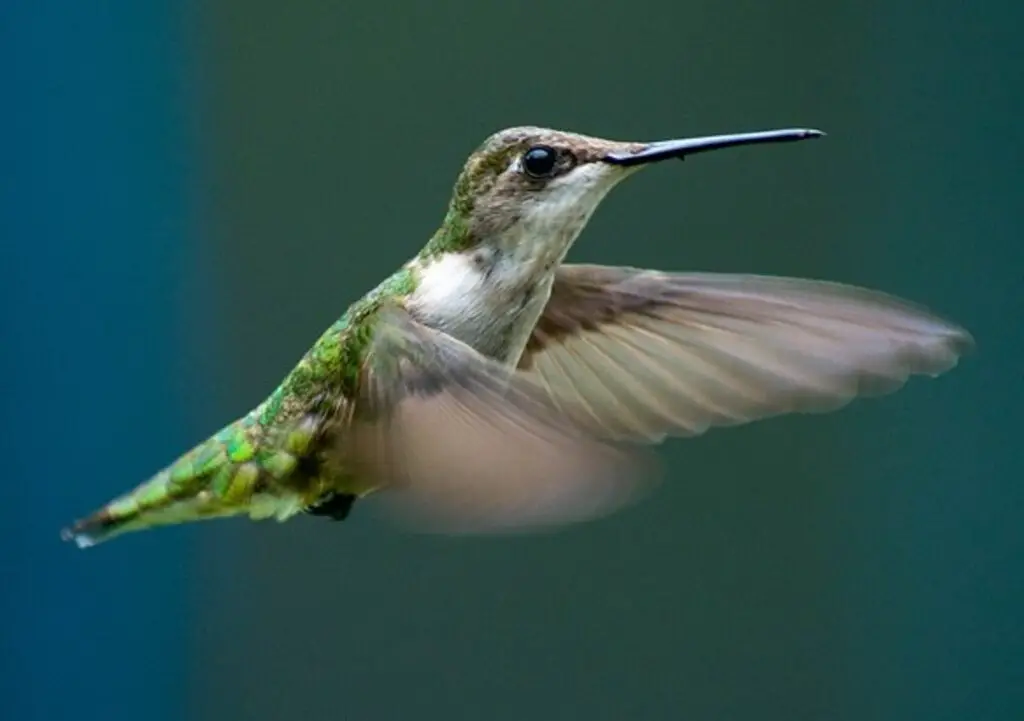Hummingbirds are renowned for their extraordinary flying capabilities, captivating observers worldwide with their agile movements and unique behaviors. Among the many remarkable feats these tiny birds can achieve, one of the most intriguing is their ability to fly backward. This exceptional skill sets hummingbirds apart from most other bird species and showcases the remarkable adaptability and agility that these avian acrobats possess.
Table of Contents
The Unique Flying Abilities of the Hummingbird: Which Bird Can Fly Backwards
The Science Behind Hummingbird Flight
Hummingbirds are the only birds capable of sustained backward flight, thanks to their specialized anatomy and flying techniques. With an average wingbeat frequency of around 50 to 80 flaps per second, hummingbirds can hover in place, fly forward, backward, and even upside down with impressive precision. Their wings move in a figure-eight pattern, generating lift on both the forward and backward strokes, allowing for remarkable maneuverability in the air.
Evolutionary Adaptations
The unique flying abilities of hummingbirds are a result of millions of years of evolution that have shaped their physiology to suit their specific ecological niche. Their lightweight bodies, fast metabolism, and specialized wing structure enable them to perform complex aerial maneuvers with ease. These adaptations have allowed hummingbirds to exploit a diverse range of floral resources and outmaneuver competitors for food and territory.
Feeding Behavior and Flight
Hummingbirds’ ability to fly backward is closely linked to their feeding behavior. These birds are nectarivores, relying on flower nectar as their primary energy source. By hovering in front of flowers and extending their long, specialized tongues to reach deep into floral tubes, hummingbirds can access nectar that other birds cannot reach. The flexibility to fly backward allows them to maintain their position while feeding and navigate efficiently through dense vegetation.
The Role of Wing Design
Hummingbirds possess unique wing morphology that contributes to their exceptional flying skills. Their wings are long, narrow, and highly mobile, allowing for rapid adjustments in flight direction and speed. The ability to rotate their wings in a full circle enables hummingbirds to perform intricate aerial maneuvers, including flying backward with precision and control. This distinctive wing design is a key factor in their mastery of sustained backward flight.
Conservation Significance
Understanding the remarkable flying abilities of hummingbirds is not only fascinating from a scientific perspective but also crucial for their conservation. As climate change and habitat loss threaten natural ecosystems, studying the behaviors and adaptations of hummingbirds can inform conservation efforts aimed at protecting these vulnerable species. By preserving their unique flying capabilities and the habitats that sustain them, we can ensure a future where hummingbirds continue to enchant us with their aerial displays.
The hummingbird stands out as a true marvel of the avian world, showcasing unrivaled flying skills that include the ability to fly backward. By delving into the science behind their flight, exploring their evolutionary adaptations, and highlighting the role of wing design in their aerial prowess, we gain a deeper appreciation for these remarkable birds. As we continue to unravel the mysteries of hummingbird flight, we pave the way for enhanced conservation strategies that safeguard these extraordinary creatures for generations to come.

Uncommon Adaptations in Avian Species: A Closer Look at Bird Flight Mechanisms
Birds are fascinating creatures with a wide range of flight adaptations that enable them to soar through the skies with grace and agility. One of the most intriguing questions about avian flight is, “Which bird can fly backwards?” Let’s delve into this unique ability and explore the remarkable mechanics behind it.
Understanding Reverse Flight Abilities in Birds
While most birds fly forward in a typical fashion, there is one species renowned for its ability to fly in reverse: the hummingbird. Hummingbirds are tiny, colorful birds known for their rapid wingbeats and hovering capabilities. These remarkable birds can fly not only forwards and upwards but also backwards and even upside down.
The Astonishing Hummingbird Flight
Hummingbirds have several adaptations that allow them to perform their incredible aerial feats, including flying in reverse. One key aspect of hummingbird flight is their unique wing structure. Hummingbird wings are incredibly flexible, allowing them to rotate their wings in a figure-eight pattern. This motion creates lift on both the forward and backward strokes, enabling the bird to hover and move in any direction effortlessly.
The Role of Wing Morphology in Reverse Flight
In addition to their specialized wing movement, hummingbirds also possess other anatomical adaptations that contribute to their ability to fly in reverse. Their wings are long and narrow, with a high aspect ratio that helps reduce drag and increase maneuverability. This, coupled with their rapid wingbeats that can exceed 50 times per second, makes hummingbirds agile fliers capable of intricate aerial acrobatics.
Feeding Behavior and Flight Techniques
Hummingbirds’ ability to fly backwards is particularly useful when feeding on nectar from flowers. By hovering in front of a blossom and flying in reverse, hummingbirds can access the nectar more effectively using their long, specialized beaks. This unique feeding behavior sets hummingbirds apart from other bird species and showcases the evolutionary advantage of their reverse flight capabilities.
While many bird species exhibit impressive flight abilities, the hummingbird stands out for its remarkable skill in flying backwards. By understanding the intricate mechanics behind hummingbird flight, we gain a deeper appreciation for the diversity and adaptability of avian species. Next time you spot a hummingbird darting among the flowers, take a moment to marvel at its extraordinary aerial talents.
Conclusion
In the realm of avian wonders, the hummingbird stands out as a true marvel of nature. Its ability to fly backwards sets it apart from most other bird species, showcasing the incredible adaptations and specialized mechanisms that have evolved over millions of years. As we delve deeper into the world of bird flight, we uncover a treasure trove of unique abilities and adaptations that enable these creatures to defy gravity and soar through the skies with grace and agility.
The hummingbird’s mastery of flight is a testament to the remarkable diversity of adaptations found in the avian world. From its rapid wing movements to its ability to hover and fly in any direction, including backwards, this tiny bird embodies the limitless possibilities of evolution. By studying the hummingbird’s flight mechanisms, scientists gain valuable insights into the complex interplay between aerodynamics, muscle physiology, and behavior that allow these birds to perform astonishing aerial acrobatics.
Beyond the hummingbird, a closer examination of avian species reveals a myriad of uncommon adaptations that have fueled the evolution of diverse flying techniques. From the soaring majesty of eagles to the intricate courtship displays of birds of paradise, each species has honed its flight skills to suit its unique ecological niche. Whether it’s the effortless gliding of albatrosses or the swift maneuvering of falcons, every bird showcases a specialized set of adaptations that have been finely tuned through countless generations.
As we marvel at the wonders of bird flight, we are reminded of the endless beauty and complexity of the natural world. The ability of birds to fly backwards is just one example of nature’s ingenious solutions to the challenges of survival and reproduction. By adapting and refining their flight techniques over time, birds have unlocked the secrets of the skies and conquered the most elusive realms of the atmosphere.
In closing, the question of which bird can fly backwards leads us on a captivating journey through the realms of avian biology and aerodynamics. The hummingbird’s unique flying abilities serve as a shining example of nature’s boundless creativity and adaptability. As we explore the uncommon adaptations of avian species, we gain a deeper appreciation for the diverse ways in which birds have overcome the constraints of gravity and taken to the air with unparalleled grace and skill.
So, the next time you catch a glimpse of a hummingbird zipping through the air in reverse, take a moment to marvel at the wonders of evolution that have made such incredible feats possible.



